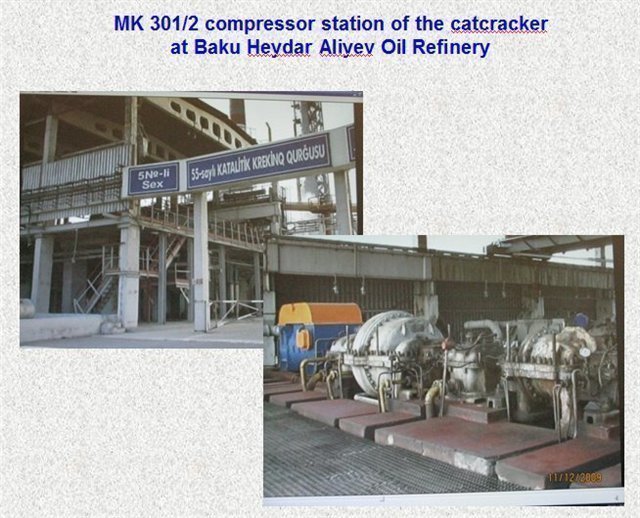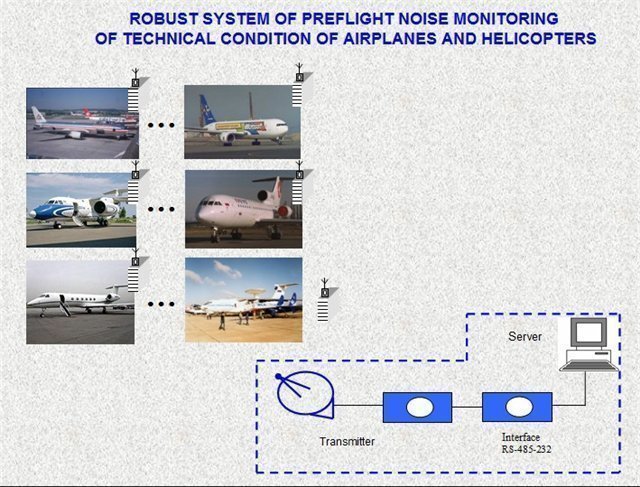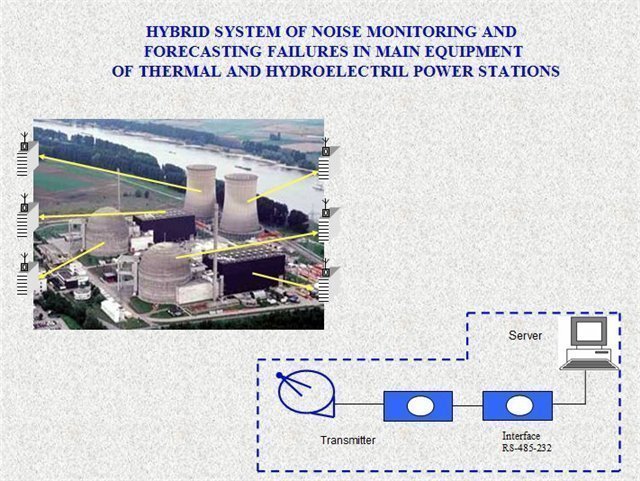
ТЕЛЬМАН АЛИЕВ
Действительный член НАНА, доктор технических наук, профессор
| Дата рождения: | 2 мая 1935 года |
|---|---|
| Место рождения: | Азербайджанская Республика, Геранбойский район |
| Ученая степень: | Доктор технических наук |
| Ученое звание: | Профессор, академик |
| Общее количество научных публикаций: | 587 |
|---|---|
| Количество научных публикаций за рубежом: | 383 |
| Количество патентов: | 109 |
| Подготовка кадров: | 37 докт. фил. и 12 док. наук |
|---|---|
| Место работы: | Институт систем управления НАНА |
| Должность: | Заведующий отделом №1 «Идентификационные методы и системы управления» |
| Служебный тел.: | (+994 12) 5394384 |
| Факс: | (+994 12) 5392826 |
| Э-почта: | [email protected] |
Station of robust noise monitoring of anomalous seismic processes (RNM ASP station)
The diagram of the station of robust noise monitoring of anomalous seismic processes (ASP) is given in Fig. 1. The basic difference of the station from all other known prototypes is that steel bores of suspended oil wells filled with water are used in it for receiving seismic information from the deep strata of earth. Unit 1 is the equipment for receiving of seismic acoustic noise from the deep strata of earth, based on a hydrophone installed at the head of a 3-6 kilometers deep well. Seismic acoustic signals are analyzed by means of the above-discussed technology and corresponding estimates are determined in Unit 2. Unit 3 is standard seismic equipment, which allows one to register and assess the intensity of seismic vibrations. The function of Unit 4 and the server of monitoring center are to identify the results of ASP monitoring at the RNM ASP station with registered earthquakes at seismic stations of seismological service.






Fig. 1. Station of robust noise monitoring of ASP (RNM ASP station)
At the initial stage, corresponding estimates of seismic signals received from hydrophones of Unit 1 are determined by means of corresponding algorithms in Unit 2. Those estimates are forwarded to the monitoring server, where they are saved. Estimates form and are saved both in Unit 2 and on the server during the long period of time. At the same time, estimates of seismic signals coming from ground seismic equipment 3 are also determined during the time and registered in the same manner. This process continues to the moment when current estimates of the signals received from corresponding sensors will differ from previous ones by a value, which is higher than the set threshold levels.
At the same time corresponding information is sent to the server of the monitoring center. Thus, information on the beginning of anomalous seismic processes forms in the system at the start of the time from the estimates of seismic acoustic signals received at the output of hydrophones. Standard ground seismic stations, meanwhile, register corresponding signals and determine magnitudes of seismic vibrations only at the start of the time (intense vibrations). That information is also sent both to Unit 4 and to the server, where the difference between moments of receiving the corresponding signals in Units 2 and 3 respectively is determined. Training and identification of ASP are carried out simultaneously both in Unit 4 and on the server in the operation process, with known technologies of recognition being used, including neural network technologies. After a certain training period on the server and in Unit 4, the minimum time of registration of the moment of the expected earthquake by standard seismic stations is determined as a result of monitoring of ASP.
Results of monitoring experiments at the station of RNM ASP at Qum Island in the Caspian Sea
An experimental version of RNM ASP station was installed at the head of 3,500 m deep suspended oil well # 5 on 01.07.2010. The well is filled with water and for this reason, a BC 312 hydrophone is used as a sensor. Fig. 2 shows the external appearance of the station after its installation. A building was constructed afterwards to protect the station from the sun, wind and other external factors.

Fig. 2. Appearance of the station after installation
The station includes the following equipment:
- System unit;
- Fastwell Micro Pc controller;
- GURALP LTD CMG 5T seismic accelerometer;
- BC 321 hydrophone, made in Zelenograd;
- Reinforcing and normalizing elements;
- Siemense MC35i terminal forming an Internet channel via GPRS.
The following earthquakes have been registered by Azerbaijan seismic stations during the operation of the station from 01.07.2010 to 15.01.2011.
09.10.2010, town of Masally 00:58:11, M:3.5, d:12 kм
11.10.2010, town of Shirvan, 22:50:23, M:3.9, d:37 kм
17.10.2010, town of Imishli, 07:20:38, M:3.4, d:18 kм
20.11.2010, Caspian Sea, 05:05:48-08:29:29, M:3.5, d: 50 km
25.11.2010, Baku, Sangachal, 09:15:21, M: 3.04, d: 36 km
Given below in the Fig. 3a, 3b, 3c, 3d, 3e are the results of ASP monitoring by means of RNM ASP. The records show that the estimates between the useful signal and the noise of the seismic acoustic signal received at the output of the hydrophone increase sharply over 5-10 hours before the earthquake, which continues till the end of the earthquake. It should be noted that the distance from a RNM ASP station to remotest earthquakes is over 200-300 km. (Arrows on the charts indicate the time of the beginning of an earthquake.)
Fig. 3f demonstrates records of the estimate of cross-correlation functionbetween the useful signal and the noiserelated to the earthquakes in Azerbaijan (21.01.2011, 01:58:54), Georgia (23.01.2011, 07:51:23), Tajikistan (24.01.2011, 06:45:29) and on the border with Turkey, Armenia and Iran (3 earthquakes - 25.01.2011, 03:56:12, 04:02:32, 07:40:04). As is clear from the results of the given charts of ASP monitoring, their lead over the beginning of the earthquake is over 5-10 hours. For instance, Fig. 3g gives the expanded record of the estimate of cross-correlation function during the earthquake in Georgia (near Kutaisi) on 23.01.2011. It is obvious from the chart that the beginning of ASP 07:51:23 was clearly registered 5-6 hours before the beginning of the earthquake. The charts show Baku time (GMT +4).
Experimental research demonstrated that in the analysis of seismic acoustic signals, clear identification of the beginning of the time by means of conventional technologies is impossible. Application of robust technology of noise analysis of estimates ,and, on the other hand, allow one to detect the beginning of origin of anomalous seismic processes reliably and adequately.
Thus, initial results of experiments show that it is possible to perform monitoring within a radius of over 200-300 km 5-15 hours before the earthquake by means of RNM ASP. Those results imply that the difference in time between ASP origin and its critical state depends on the location of the earthquake center. One can assume, based on the obtained results, that, when spreading from the earthquake center, seismic acoustic waves are reflected due to the resistance of certain upper strata of the earth and change horizontally. One can also assume that sufficient intensity of those waves allows them to travel to long distances (300-500 km).

Earthquake in QUBA on 27.06.2012 at 21:24:25 local time, mb 3.2, d=45km
Gum Island, 27 june 2012, at 07:30:00 local time, 14 hours before

Earthquake in QUBA on 27.06.2012 at 21:24:25 local time, mb 3.2, d=45km
Shirvan, 27 june 2012, at 07:15:00 local time, 14 hours before

Earthquake in SHEKI on 26.06.2012 at 01:04:06 local time, mb 4, d=5km
Gum Island, 25-26 june 2012, at 07:45:00 local time, 18 hours before

Earthquake in SHEKI on 26.06.2012 at 01:04:06 local time, mb 4, d=5km
Shirvan, 25-26 june 2012, at 07:30:00 local time, 18 hours before

Earthquake in ZAKATALA on 20.06.2012, at 01:04:06 local time, 3.2, d=12 km
Gum Island,19-20 june 2012, at 11:00:00 local time, 19 hours before

Earthquake in the Caspian Sea on 25.07.2012, at 10:21:58 local time, ML 3.6
Shirvan, 25 May, 2012

Shirvan, 25 May, 2012. Detailed diagram.

Fig. 3а. ‘Qum Island’ RNM ASP station, Noise variance, 08.10.2010, 00:58:11,
Masally, M:3.5, d:12 km
Start of ASP approximately at 04:30, 08.10.2010, earthquake at 00:58:11, 09.10.2010

Fig. 3b . ‘Qum Island’ RNM ASP station, Noise variance, 11.10.2010, 22:50:23
Shirvan, M:3.9, d:37 km
Start of ASP approximately at 00:30,11.10.2010, earthquake at 22:50:23,11.10.2010

Fig. 3c. ‘Qum Island’ RNM ASP station, Noise variance, 16-17.10.2010, 07:20:38
Imishli, M:3.4, d:18 km.
Start of ASP approximately at 15:30, 16.10.2010, earthquake at 07:20:38, 17.10.2010

Fig. 3d. ‘Qum Island’ RNM ASP station, Noise variance, 19-20.11.2010, 05:05:48-08:29:29 20.11.2010, at sea, M:3.5, d: 50 km.
Start of ASP approximately at 12:20, 19.11.2010 г., two earthquakes at 05:05:48, 08:29:29 20.11.2010

Fig. 3e. ‘Qum Island’ RNM ASP station, Noise variance, 25.11.2010, 09:15:21,
Baku, Sangachal. M: 3.04. d: 36 km.
Start of ASP approximately at 12:10 24.11.2010, earthquake at 09:15:21 25.11.2010

Fig. 3f. ‘Qum Island’ RNM ASP station, in Azerbaijan (21.01.2011, 01:58:54), in Georgia (23.01.2011, 07:51:23.0), in Tajikistan (24.01.2011, 06:45:29.0) and on the border between Turkey and Iran (3 earthquakes 25. 01.2011, 03:56:12.; 04:02:32.; 07:40:04.)

Fig. 3g. ‘Qum Island’ RNM ASP station, Estimates of cross-correlation function, 23.01.2011, 07:51:23
Georgia, near Kutaisi M: 4.5 d: 10 km
These experimental results show the expediency of building such stations of RNM ASP. In consideration of this fact, similar stations have been built at well # 427 of Shirvan Oil, at a well of Siazan Oil, in the town of Naftalan, and in the town of Neftchala. Four or five RNM ASP stations will make it possible to determine the direction and coordinates of the earthquake center.
In the long term, integration of RNM ASP stations with standard seismic stations will allow one to create robust intellectual systems of noise monitoring, which will be capable of carrying out short-term earthquake forecasting with sufficient degree of reliability and adequacy after a certain training period.
Conclusion
Obtained experimental results allow one to conclude that the lead in the time of registration of ASP origin by seismic acoustic stations of RNM ASP over widely used standard seismic equipment is conditioned by two factors. First, high-frequency seismic acoustic waves, which arise at the start of origin of anomalous seismic processes deep below the surface of earth, spread through some strata horizontally in the form of noise, which reaches the steel bore of the oil well at a depth of over 3-6 kilometers. Serving as acoustic channels, the steel bores filled with water transmit seismic acoustic noise at the velocity of sound to the surface of earth, where it is received by means of a hydrophone in Unit 1. At the same time, infra-low frequency seismic waves gain the required capacity in a certain amount of time, when seismic processes reach their critical state and an earthquake occurs, which is why they are registered by seismic receivers of standard ground equipment much later. Second, application of robust noise technology allows one to analyze noises as information carriers, which makes it possible to register anomalous seismic processes at the start of their origin, and their detection by means of estimates of characteristics of useful signals starts considerably earlier. Thus, those two factors made it possible to detect the indication time of the start of ASP of the coming earthquake by means of robust noise analysis of obtained seismic acoustic data considerably earlier that it is registered by stations of seismological service. An earthquake is usually detected no less than 5-10 hours before its beginning, which can give a chance to warn the population in due time about the danger of a powerful earthquake. It was proved after the start of operational testing of the second station at the 4,400 m deep well # 427 in Shirvan Oil on 20 November, 2011. First experimental monitoring results given below in Fig. 4 were obtained by this station on 23.10.2011 and 24.10.2011 more than 10-12 hours before the beginning of the earthquake. The similar record was made at the Qum Island station. (X is time axis, Y is axis of values of noise variance.)

Shirvan RNM ASP station, 23 October 16:00:25. East Turkey M=5.6

"Qum Island” RNM ASP station, 23 October 16:00:25. East Turkey M=5.6

Shirvan RNM ASP station prolonged earthquakes, 24 October 06:57:59. East Turkey M=3.8

"Qum Island” RNM ASP Station, prolonged earthquakes, 24 October 06:57:59. East Turkey M=3.8
The experiments demonstrated that determination of the coordinates and magnitude of an expected earthquake requires creation of networks consisting of at least four stations and their integration with standard seismic stations. For that end, another four stations were built in 2011 in addition to the station at Qum Island in the Caspian Sea: in the town of Shirvan and in the town of Neftchala in the south of the country, in the town of Siazan in the north and in the town of Naftalan in the west.
With all five stations operating, results of processing of seismic acoustic signals will be sent at the moment of monitoring of ASP origin, i.e. in the transition from the time cell into the time cell , from each station to the server of the monitoring center by means of all the proposed technologies.
The starting point of indication time of ASP monitoring will be transmitted from each RNM ASP to the server, and sets of differences in monitoring time of all seismic stations will be determined.
After every ASP monitoring cycle, all stations form sets on the server of the monitoring center based on the obtained results and their system analysis is carried out. Results of analysis of obtained experimental data, as well as results of tests and operation of equipment of RNM ASP stations will be used to determine final requirements with regard both to hardware and to models, algorithms and software of the server and the whole system in general. First of all, they must be capable of determining the coordinates of an earthquake center within a radius 300-400 lm with sufficient accuracy, using the difference in time of receipt and indication of ASP between five stations. After determination of the distance between the earthquake center and the stations, software of the system must allow one to calculate the estimate of minimum magnitude of an expected earthquake.
It should be noted in conclusion that the system can also be used for monitoring of the latent period of formation of volcanic eruptions.
























